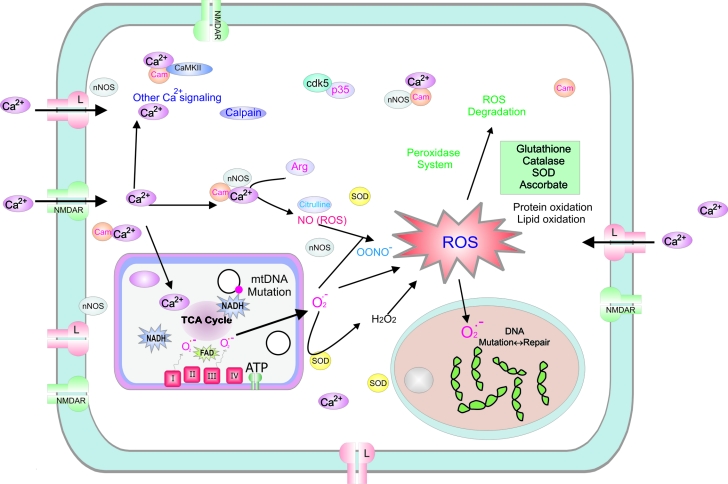Figue 1.
Schematic diagram of a typical neuron shows Ca2+ dependent and reactive oxygen species (ROS) signaling that modulate energy production in young adult (i.e., normal). Cellular response following neuronal stimulation includes an increase in intracellular Ca2+ influx (via NMDA receptors and L-type calcium channels in particular) and increased metabolic activity in the mitochondria. Oxygen turnover in the electron transport chain can generate superoxide anion at complex I and III, which then leads to a variety of ROS, which are subsequently normally degraded by glutathione, catalase, superoxide dismutase [194] and ascorbate. ROS can lead to protein oxidation, lipid oxidation and somatic DNA mutations at both the mitochondrial (i.e., mtDNA) and nuclear levels. NMDAR; N-methyl-D-aspartate receptor, CaMKII; Ca2+/calmodulin-dependent protein kinase II, cam; calmodulin, Cdk5; cyclin-dependent kinase, ROS; reactive oxygen species, ATP; Adenosine-5′-triphosphate, mtDNA; Mitochondrial DNA, LTP; long term potentiation, NAD; Nicotinamide adenine dinucleotide, nNOS – neuronal nitric oxide synthetase, TCA cycle; tricarboxylic acid cycle, Arg; arginine, SOD; superoxide dismutase.

